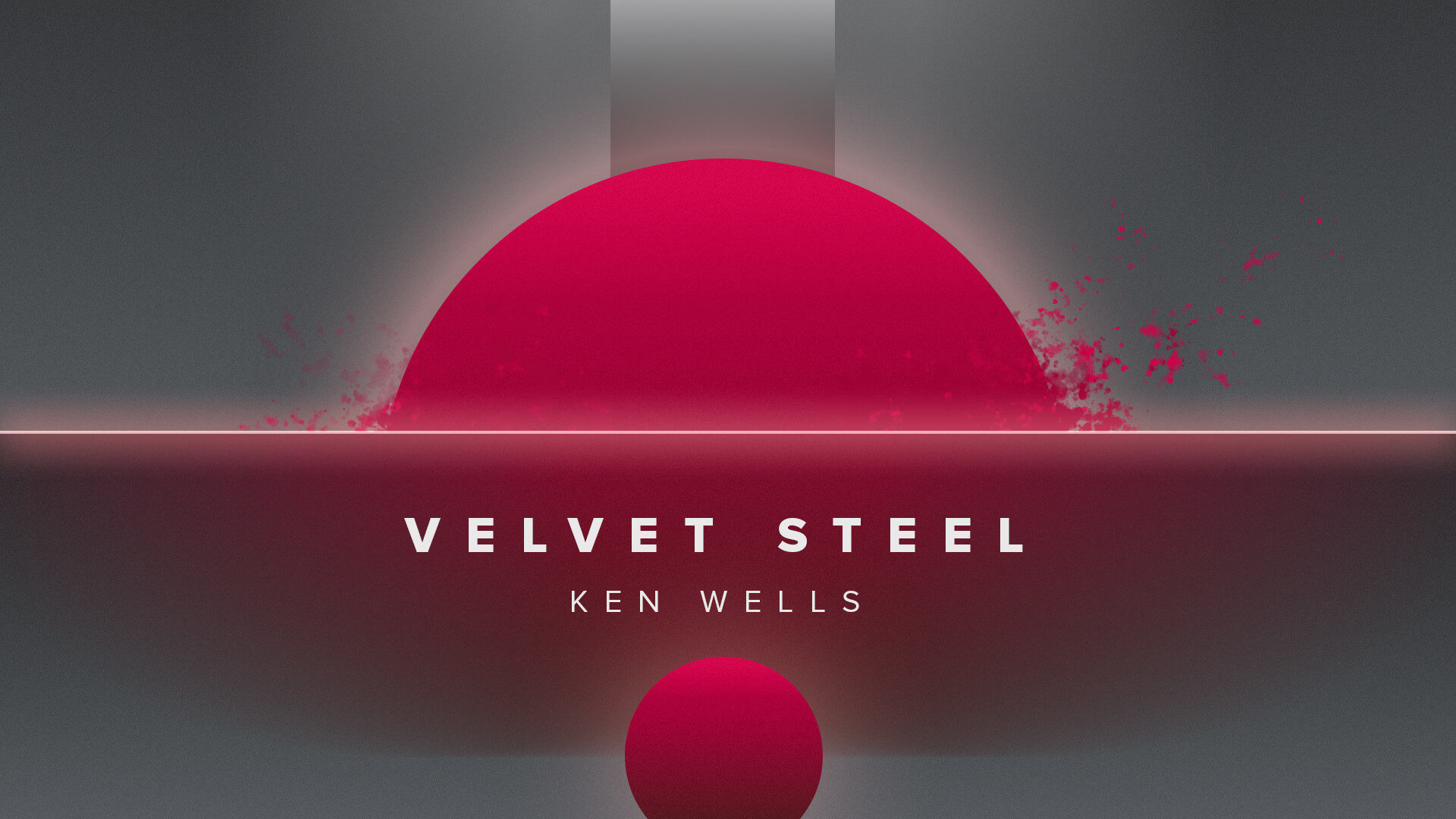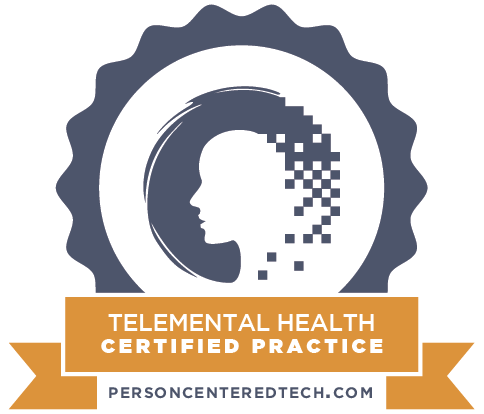The Importance of Rest
What I have found throughout my time in the mental health field is that many people in the world equate or have learned to equate their productivity to their worth. It is common that these individuals will take on many tasks and activities that fill their time and mind so they are able to feel valuable in the world or to certain people. These activities can be emotionally, mentally, or physically taxing for each person and yet they continue to participate with little to no time for themselves to recuperate; just constantly going and doing.
Rest has not been modeled or considered positive for many. In fact, slowing down has often been described as “lazy” or unnecessary by many clients who have come through my office. With this perception, these people are consistently depleting themselves—leaving them left to give and do none of the activities and tasks they hope to.
It seems that we can’t really give what we don’t have. So, if we hope to give our greatest effort/energy in all that we do, it is likely that we will need to rest to show up in the ways we want. This can be achieved by taking time to check in with our needs, be present to our emotions, and truly find times/ways to REST. Rest can look different for each person—it can be emotional, physical, spiritual, social, mental, sensory, or creative rest. This can look like lying in bed/taking a nap, participating in meditation, being in nature, taking time away from social activity, pausing use of television or social media, and more.
It is my hope that the skewed perception that someone is not productive if they choose to take time for themselves or engage in restful behaviors can be debunked and the concept of rest can continue to be reframed as a helpful tool and positive activity for those that need it most.
Reading was instilled in me at a young age. As a child I used to think, “how cool is this, I get to travel to a faraway land” and escape into the world the author created. As I grew older my reading selections evolved into learning something new, seeing through the eyes of someone else, and trying to figure out “who did it” so I can prove my detective skills right. I learned the importance of keeping my mind occupied and growing. Looking back, there are so many hidden skills that I was subjected to as I dissected each character and joined them on their journey.
Reading allows us to learn how to cultivate friendships and how to disengage when the friendship has ran its course. We can learn about various personality traits including how manipulation always back fires in the end and lies always come to the surface. Books give us the opportunity to learn the importance of being kind to oneself and that everyone experiences hurt. We learn how to communicate effectively and have hard conversations, as well as what probably should be left unsaid or spoken in a nicer tone. Reading teaches us the importance of having a support system and what can happen when someone betrays our trust. Some books teach us that we cannot go back in time to change things and even if we could, the outcome would not be what we expect. We can learn the importance of using all our senses and brain to help navigate tough situations. We are exposed to the importance of always packing a safety bag in our car, because we never know what can happen or when. We also learn that people are not always nice or have our best interest at heart. We learn there are different kinds of love as well as different kinds of anger. Books teach us that life can be hard, bittersweet, joyous, and dull. We also get to have an imagination, regulate our emotions, determine why a character is liked or disliked, and even find similarities of ourselves within the pages. I had no idea how much wealth was right before my eyes.
As our society is battling whether or not to ban books, sensor material for pre-adults, publish material that is not scientifically proven, and even make horrible movies (as the book is always better); I think it is a great opportunity for all of us to get back to the reason as to why books were created. Simply to educate, document history, and later on as entertainment. Without reading, I would not be who I am today. I recommended various books to clients on a regular bases and encourage them to bring in their own suggestions so we can process it together. Books can help us recognize that we are not alone, that we matter, and it’s okay to not be okay.
I strongly encourage all readers of this blog to pick up a book. If you are needing recommendations – reach out, I have tons of suggestions. Get yourself on a reading app to track your progress and find new authors, personally I enjoy Goodreads and Bookmory. Get involved in a book club. Reward yourself with pizza hut individual pan pizza when you complete your challenge (totally worked for me as a child!). Go cruise a library or book store. Decide if you are a physical book, Kindle, or audiobook person. Give books as gifts. Share your great read finds with others. Reading does not have to be dull or dry, find a genre that resonates with you. Reading is powerful, assert that power!
Series Three: Blog
Alex had been cheating on Alice from day one. Secretly, he hired strippers at his bachelor party and never made it through his honeymoon without cheating with someone he met at the pool of the resort where he and Alice stayed during the week after the wedding. It didn’t stop. He slept with Alice’s best friend, hired hookers when on the road for his work, and was hooked on porn. Alice caught him looking at porn on his phone late one night and suspicioned there was more but was afraid to confront him. Then, one evening Alex’s phone rang and Alice picked it up thinking it was their daughter needing to be picked up from volleyball. But it wasn’t. It was a strange female voice who asked for Alex. When the person recognized that it was not Alex she hung up. Triggered with suspicion, Alice checked his texts and phone messages. She discovered a ton of graphic sexting texts between Alex and a woman named Lisa. She checked the phone number and figured there were over 75 phone calls to this one woman’s number. She called the number on Alex’s phone and the same voice of woman answered the call and Alice hung up without saying a word. She burst into tears because she knew what she had been dreading for quite some time. She confronted Alex about the call, but he denied and lied about anything inappropriate. She stayed with it and laid out the enormity of detail that she uncovered and finally after hours of adamantly denying and gaslighting Alice, Alex broke down and admitted that he had been having an affair with a woman named Lisa who worked at his company. He piecemealed his history of sexual misbehavior. It wasn’t till a month and a half later when through intensive therapy and an extensive sexual history polygraph that Alice learned that Alex was never faithful to her throughout their ten years of marriage.
She determined that the only way she would remain in the marriage is if he moved out, go to inpatient treatment recommended by his therapist and do whatever they suggested he do.
This is a common story for therapists who work with compulsive sexual betrayal. The stories vary and some relationships are able to heal betrayal brokenness while many are not. Addictive behavior is often concealed in deceit and secrets. In time, compulsive infidelity is discovered by partners and other family members. It is always traumatic for everybody.
Healing around betrayal is difficult and dicey. The trauma that is incurred impacts both the betrayer and the betrayed. The hurt is multifaceted.
Therapists treating broken trust have a number of considerations to assess when administering treatment. There are established guidelines for counselor support. However, while there are similarities that are common to all partner betrayal, no two betrayal responses are the same. Couples whose relationships have been riddled with compulsive infidelity with long term dishonesty have a number of consideration to assess.
- The compulsive betrayer must prioritize the following in order for healing to be effective: Cut off all contact with the affair partner. This includes text, email, phone calls and face to face visits. If the affair partner is in a working relationship with the compulsive betrayer, contact must be only about business with a commitment to gate all nonverbal energy communication. Preferred accountability about this dynamic would be with a recovering person who also is working a program. The betrayer must prioritize stopping the runaway train going down the track, their entrenched compulsive sexual behavior that has been in existence for a long period of time. Individual treatment is an absolute must. Promises to stop fade away all too frequently for the one who refuses treatment intervention.
- The partner must engage treatment for damage created by the betrayal. All too frequently the partner refuses treatment favoring that their betraying partner be the “identified patient”. It is familiar to hear “I am not the one who struggles with lying and infidelity. Focus on the betrayer. They are the culprit. This is like getting run over by a big Mack truck and laying on the side of the road with tire tracks across your back. The paramedics are called and when they arrive they tend to the driver put them in the ambulance and whisk them to the emergency room for treatment, leaving the victim who was run over lying on the side of the road. It makes no sense. Betrayal breaks the heart and the spirit of every victimized partner. Induced trauma requires long term partner treatment for recovery. Codependent responses are always triggered by underlying trauma. It must be treated and will not heal without it.
- The 3-legged stool approach. I prefer the 3-legged therapeutic approach. Every stool must have solid legs in order for the stool to be solid enough to safely sit. I find it most helpful that when treating betrayal trauma that each party in the relationship do individual therapy and that the couple also engage therapy, ideally with three different therapist involved. I have experienced good success when it is done concomitantly. There are exclusion when situations are exempt to this approach. That said a three pronged approach has proven most helpful in healing.
- Triage priorities in treatment. Betrayal is chaotic and crisis is not uniform and predictable. Careful consideration and guidance is needed in treating the betrayer, the betrayed partner, family, friends and extended community depending upon the roles people have in those communities. Both partners will need to embrace their wise-minded adult and if this is absent carefully accept the guidance from an experienced counselor to triage treatment base on your specific and unique needs.
Destructive behavior, broken hearts and tire tracks across the back caused by betrayal can heal. However, it is a long journey the insists that both partners embrace the healing journey. One or the other being the “identified patient” will impact prognosis for healing and stymy healing. Addict betrayal is not only about relational infidelity. Addicts betray their own values and the trust of those who are counting on them to work a program for healing. It is crucial that the entire family treat the addictive behavior from a family systems perspective. Each family member will need to address the impact of trauma that warps perspective and undermines trust.
Series Three: Blog Ninety-Six
Mothers are a powerful influence in the emotional development of every child. The emotional stress and strain that a mother engages while the child is in utero impacts emotional development significantly. Environmentally, children absorb the emotional experiences of their parents. A child depends upon mother for self-validation, mirroring acceptance and value, predictability, security, understanding, physical, emotional safety and to know that they matter. There is a myriad of other needs that a mother is responsible to fulfill for a child. Obviously, motherhood requires immense partner, familial and social support in order to provide these childhood needs.
When childhood necessities go unmet, metaphorically, the lack of developmental provisions resemble a chunk of Swiss cheese with the holes representing scrambled unmet needs. As a child physically develops into adulthood, they attempt to reach outside themselves to meet those needs through a cocktail of experience including achievement in career, performance in relationship, excessive pleasing behaviors, addiction, etc. However, you cannot fulfill a developmental need within by reaching outside through life experience. You become like a little kid who can’t get enough sugar. There is created a hole in your soul that can never be filled from the outside in.
Frequently, people subconsciously look to a romantic relationship to fill the emptiness created by unmet childhood developmental needs. They depend upon the romantic partner to fulfill those unmet needs. The rationalization is that my one half + your one half equals a whole. However, 1/2 x 1/2 = 1/4! You have less, not more. This is because the attempt to meet core developmental emotional needs through another is impossible. Another person cannot fulfill those core needs no matter how hard they try. Those needs can only be addressed within you.
In relationship, when two people recognize this and work toward developing healthy self-parenting skills, they learn to enhance each other’s sense of wholeness. Through healthy individuation one learns to look within to recognize and address core developmental needs and then engage relational fulfillment by sharing emotional and life experience.
The attempt to look to someone else to fulfill core developmental emotional needs is a common dilemma for addicts in recovery. It is subtle and often is pursued subconsciously.
In the course of conversation with a partner, a misunderstanding occurs. For the addict, it is important for the partner to understand motive and intent as well in the words they used to express themselves. However, the partner has their own lens and interpretation of what they heard and experienced.
When an addict feels misunderstood and judged, subconsciously the partner becomes the parent or mother that could never be pleased. Without awareness the wise mind adult empowers the child within to navigate the adult misunderstanding. The child within is not capable of working through adult misunderstanding. So the addict gets stuck trying to address an adult relational issue from the viewpoint of a child. It’s no wonder it never works! It is prevalent that the empowered child from one partner triggers the engagement of the child within the other. So, you have two little kids trying to address an adult problem, looking to the other to be the mother to care for their emotional needs. Is it a surprise that the results are abysmal? It is all too common for addict relationships to get stuck right here!
Here are some suggestions to unravel this destructive relational dance.
- Spend time identifying unmet developmental emotional needs: This requires introspection. Adult Children of Alcoholics (ACA) groups can be very helpful with this pursuit. The “laundry list” can help you identify unmet emotional needs from childhood. Further exploration is often needed with the help of a therapist.
- Identify mistaken beliefs that block intimacy: Get clear about what you tell yourself when you make a mistake or experience a misunderstanding. You will be triggered by messages you received when you were a child either by what your mother or father verbally told you or by what you made up when a developmental need was left unmet. A child only knows they matter when mother/father spends sufficient amounts of time with them on the child’s terms and not the parents. When this does not happen a child makes up that it is about something flawed regarding them and not parental deficiency. Those mistaken beliefs are triggered in a misunderstanding with someone significant because your wounded child will be activated.
- Address unresolved childhood trauma. Therapists talk about draining the pool of pain that exists from your childhood. It is most helpful to have a trained therapist help you. If you cannot afford a therapist then a group and sponsor from Codependency Anonymous, Al-Anon, ACA and other addict support groups can be helpful. You will need to scrub the wound. Ultimately, it depends upon your desire to address the trauma that sabotages your relationships.
- Create new empowering beliefs to replace the old mistaken beliefs. Scrubbing the wound of childhood trauma will lower your reactivity to the mistaken beliefs that were manifested early in life. However, you will need to create new empowering beliefs to replace the old hurtful beliefs. Those old beliefs seldom are erased. Rather you must commit to practice employing the new empowered belief in your day to day life. This will take great daily effort and practice. Perfection will spoil your practice. Commitment to belief is much deeper than perfect knowledge. It encompasses not if but when I re-engage old destructive beliefs, I stop to intervene with the new empowered belief. This takes ongoing training and conditioning. Over time your new belief system will emerge to guide you to empower your wise mind rather than hand the reins to the little boy or little girl who is incapable of managing the issues of adult living.
- When you get stuck in reactivity, ask yourself is my “wise mind adult or my little child empowered or in charge? When the “little boy” or “little girl” is in charge, don’t be ruthless with h/her. Simply express that your wise mind will address the issue, simply take the reins from the child and care for him or her with an adult decision. You may need to take a time out to create a position of poise and perspective. Just remember taking more time to do so will be in the long run a short cut.
- Brainstorm and cultivate a plethora of self-parenting skills. You may recognize that there were many fundamental emotional needs that were left unmet when you were a child. Take heart! You are resilient. Utilize a beginner’s mindset. Be hungry to learn and to apply new self-parenting skills. You can read about them or hear about them in recovery groups. Pick and choose skills that are role-modeled by healthy adults around you. The resources for learning are endless. The key is that you not be inactive. Take charge! Learn to be the adult your destiny calls you to be. It will not only enhance your intimacy skills but will offer a healing legacy to the next generation that follow you.
In the end, the answer to the question of who’s your mother, comes back to you. You are! You will need to fire your biological mother as your emotional mom and not look to your relational partner to give you what you did not get from mom. You must hire yourself to be your own emotional mom. It’s the only way enriched emotional intimacy will be realized in your life.
Series Three: Blog Ninety-Five
The Flying Wallendas are the most celebrated tight rope act in the world. The Wallenda family has been performing tight rope acts for over 200 years. They were the first to walk a tightrope across the Grand Canyon and the Niagara Falls. Tino Wallenda stated that they perform and practice without a safety net because the safety net can trigger you to be more careless. Plus, a net is not a guarantee of safety. “I’ve known four people in my life, either landed in a net or missed the net, and died,” he said.
Betrayal behavior is an experience that triggers the need for a safety net. Devastated by heartache, the cry for reassurance is understood. Addicts in recovery look for a magic formula to prevent relapse. The tendency is to look to others to provide the safety net just in case someone slips and falls off the wagon. The problem with safety nets is that they don’t work. I have been in recovery from addiction for 32 years and treating addicts in recovery and their partners and families for 30 years.
Support from others is necessary but not sufficient. Addicts have a tendency to look for a magic bullet that will insulate them from relapse and provide a safety net. Partners and families are vulnerable to the same illusion.
Addicts go to 12-step groups, listen to the old sages who have been sober for years and think that if they just do their lives like their role model it will protect them from ever relapsing and they won’t need to worry about potential downfalls. Addicts tell each other this as well.
Partners do the same. They attend partner support groups and listen to the harrowing stories of peers walking through the same betrayal. One person says do this or that. Sometimes it’s a polygraph upon demand. Other times it’s put a GPS on an addict’s vehicle to track whereabouts or to put a monitor on all devices. Sometimes partners tell an addict to go to this or that treatment intervention or workshop.
Recovery is not static. It is dynamic. There is no black and white answer to what works or what will provide a safety net to prevent relapse for all. What works for one won’t work for another. Any and all interventions can be necessary but not sufficient. It depends upon personal initiative and awareness. It really comes down to attitude and determination to do whatever it takes to be sober. Doing recovery with an attitude of compliance to a sponsor or a partner ultimately leaves the addict more vulnerable to relapse. This pursuit is personal and cannot be micro managed by another. I don’t know any addict who remained stuck in an attitude of compliance to another party, who ultimately experienced serenity. Peace escapes the one who lives life trying to comply to the expectations of another. Doing recovery to conform to the wishes of another ultimately leads to emptiness and is not sustainable. You may experience initial relief from the reckless life of addictive behavior but ultimately you will return to the same emptiness that triggered your addictive behavior in the first place. Recovery only happens for addict and partner when each does what they know they need to do for themselves, not because they are trying to control their environment but because they want to experience the serenity of sober living.
So if I cannot ultimately depend upon another to be a safety net then how do I create personal safety when facing the trauma that comes from addiction?
Listed are a few considerations:
- The Way out is to go in. Addicts not only traumatize others around them but they traumatize themselves. Outside intervention is needed to treat trauma for those in the wake of destructive behavior for both addict and partner. For sure, betrayal is devastating. Necessary interventions are assessed and triaged depending upon the impact of the betrayal wound. Not every person suffers the same impact from betrayal. Ultimately, deeper healing is experienced when addict and partner go deep inside and access their own personal resource for healing without depending upon the other to fix them by performing certain behaviors or avoiding others. The way out from fear of relapse is to go deep within and heal the heart. In the face of anxiety, fear and dread of potential relapse, it is one’s own heart that ultimately provides an invisible safety net. No matter how your partner responds to h/her recovery you can resiliently do the next right thing to preserve your dignity, respect and safety by going deep within.
- Construct your boundaries to care for self, not to control the behavior of another. When a child falls down steps and hurts themselves, a responsible parent constructs a barrier so that an immature child does not repeat the fateful action. However, when that child is an adult they will need to learn to implement their own barrier for protection. Sometimes during the growing up stage, a child will become bossy toward other children thinking that is their job to make sure others obey the rules and avoid a negative outcome. Eventually, the child learns that it doesn’t work to be bossy. In recovery, a similar experience is true. When doing recovery, it is critical to set boundaries to care for yourself, not to control another person. The reason is that it simply doesn’t work. If an addict adheres to boundaries solely to appease a partner, h/she will lose themselves and ultimately increase the likelihood of relapse. Sometimes a partner will accept compliance and conformity and mistake it for safety. It’s like walking on thin ice. You are safe until the ice cracks and you fall through. What you thought was a safety net was an illusion. Boundaries are for self care, not to control another’s behavior. They are not for threat either. Going inside requires that you painstakingly and carefully determine what you will and will not live with. It cannot be what someone else tells you should be. Creating non negotiable boundaries requires agonizing consideration that is carved deeply in your own heart. Non negotiables do not come from knee-jerk reactions to mistrust, emotional pain or irritability. It comes from a deeper place of choices that you make about how you will live your life in response to addictive behavior. Once you get clear about what your non negotiables are then you live by them and let them guide your life toward healing, broken intimacy with your partner. Some addicts and partners choose to end the relationship when a non negotiable is broken. Ultimately, if you end a relationship from a deep heart decision about a broken non negotiable that had been established through deep forethought, in time you will heal deeper than if you end the relationship from reactivity or from a rebounding response. This is true for both addict and partner. Boundaries are to care for yourself, not to control someone else.
- Listen to the internal voices that sabotage your recovery and take ownership of the message, then respond as an adult. Trauma triggers a scared little kid inside to take the reins of responsibility and try to control the direction of life. Little kids are not capable of responding to adult trauma. Reactivity deafens the internal voice so that you don’t recognize the sabotage buried in the frenetic response to avoid fear and painful abandonment. Take a deep breath! Listen to the message that motivates your reactive response. You will learn that reactivity comes from a scared kid within. With firmness and gentleness, take the reins of response and decision making from the frightened child and pull the child close you in spirit. Don’t alienate h/her with shame and criticism. Give reassurance that the wise mind adult within has got this! When you feel dysregulated reach out to your support community for the purpose of grounding. The answer for your relapse and betrayal for both addict and partner is within you. When you want to run, don’t. Stay put and listen deeply to your frightened internal voice and determine what the message of mistaken belief is and whose voice spoke that to you earlier in life. Then reframe the message. If it tells you that you are not enough, reconstruct it with your wise mind and assert that you are enough just the way you are. You are an unrepeatable miracle of God with unlimited capability to manage your broken heart. It will take training and conditioning with much practice. However, when you pay attention to the internal voices in the presence of betrayal behavior you will find a deeper solution that will guide you without succumbing to a temptation to control your addict partner or your betrayed partner.
For the Wallenda’s the ultimate safety net was trusting their heart before they took one step. Learn what it means to go deep within. Ultimately as you mature in awareness you will discover your own invisible safety net that exists within your heart.
Series Three: Blog Ninety-Four
A calling is an inside force to be, create or achieve a life experience that has not been realized. It is an exploit that cultivates bliss. Even once realized, there is a conscious enlightenment that you are doing what creates deep satisfaction within your soul.
Callings are often missed in life for many reasons. Many people die with the music that resides within never expressed. There are a myriad of reasons why this is true. I would like to suggest only a few that I think matter most for you to consider.
Thoreaus wrote about people living quiet lives of desperation. Many never pursue their calling because they live their lives without marshaling their desperate lives. Rather than being dominated by quiet desperation, why not quietly move the energy of desperation in the direction of your favor? You don’t have to allow the days of your life to slip away into meaninglessness. If you grew up the way I did you have every reason to feel desperate. In my recovery I had to learn to take feelings like dread, depression, malaise, anger, shame, loneliness, desperation and transform it into something helpful rather than hurtful. You will too.
I have been reading, “Let the Record Show” by Sara Schulman, a historical narrative for the Aids Coalition to Unleash Power (ACT UP). Schulman chronicles the influence and impact of those within the organization who in many cases sacrificed their very lives in pursuit of effective treatment for those suffering from HIV and AIDS. Even though there is tragically far too many deaths around the world from AIDS that is now treatable, the scientific advances that save lives today would not have been in existence had some members of ACT UP not paid the ultimate price of dying in attempt to save others and their own lives. Schulman’s record is a narrative of desperation. Without it the hope for healing from HIV + would have never been realized. Clearly the annal attests to the value of desperation that existed within the calling of many thousands who mostly lived in gay and lesbian communities around our country in the 80’s and 90’s. One cannot read the accounts written of sacrifice and desperation without being inspired by their acts of service toward humanity.
During the past three decades I have treated many forms of addictive behavior. I have never been successful in helping an addict overcome their destructive behavior without that person being desperate. The 12-step community identifies the experience as “hitting bottom”. It’s the place where you decided down deep that you have had enough. It could be poverty, abuse, a bad marriage, addictive behavior, physical condition etc., you name it. Only when you are desperate to change your life situation will you access the resources to transform your existence. You take the experience of desperation and move it from being victim to victor. You move the negative energy toward a positive result. You put pictures of past gloomy days of hopeless desperation in your mind that motivate you. You determine in the deep recesses of your soul that, no matter what, you will not repeat those days of hopeless desperation in your addiction or other plight of life. You become hungry and urgent with intervention. You decide to walk to hell and back to create the change you envision. You will put up with whatever discipline, behavioral change and discomfort necessary to change the desperate environment that creates misery in your life. Schulmann chronicles this sense of desperation to have been most powerful in a collective community sense. Desperation is the average, common component in everyone’s life necessary to experience transformation toward discovering their own brilliance. Without it there would have been no ACT UP. Desperation is the component necessary to make peace from war, healthcare for all, and to overcome poverty in our communities. Desperation fans the flame of personal and community will.
Callings are stunted and fade from realization when individuals fail to redirect their desperate lives toward transformation. While you cannot do the individual work for another to redirect their desperation, collectively we can change the horizon and landscape that provides more possibility. I believe there is a calling within community for individuals to answer. We cannot help everyone but we can take time to help others redirect desperation into transformation. The 12-step community identifies these actions as “acts of service” that constitute living out the 12th step.
Callings are muted by discouragement. Sometimes in discouragement we tell ourselves “if my situation just wasn’t so desperate!” The truth is that without the sense of desperation nothing ever changes and callings are never answered.
Feeling desperate about relationships that hurt, addictions that dominate, physical conditions that needs to change, feelings that overwhelm? Move your experience of desperation into transformation. Become desperate to create something different. Decide you will do whatever it takes to end addictive behavior, compulsions with food, procrastination, and negative behavior that keeps you stuck and mutes your response to the calling that beckons within your soul.
Series Three: Blog Ninety-Three
Being in recovery from addiction for 32 years and listening to addicts share their journey of recovery has led to interesting observations and, for me, deeper truths about the world we live in. Today’s blog is about this reflection. You might contemplate your own musings about these thoughts from your recovery path.
Rules and regulations are helpful until they are not. Many of the great religious teachings and healing modalities of our times promote rituals, rules and regulations that serve as a machine that help to create the world we want to live in. People find comfort when there are rules that give jurisdiction that govern human behavior. For most of us, the idea of free-falling without knowing the end result is unnerving. So we create machines with rules that give oversight and control which lead to predictable end results that provide emotional safety.
Religions provide this safety and so do 12-step groups. You complete the 12-steps with a sponsor, attend the meetings, take the advice given and hopefully you will experience sobriety that leads to serenity. There are testimonies of thousands who support this kind of machine.
It’s a lot like religion. Orthodox Jews, fundamental Christians, Buddhist monks, etc all have certain behaviors, customs, disciplines which become machines that promote the same result. All have been amazingly helpful.
However, the rules and regulations of any entity can subtly shift its focus when the machine of rules and regulations becomes a way to make the world in our image. The Dalai Lama is attributed to have said “know the rules well so that you can effectively break them”.
How does this apply to recovery? Recovery is a virtuous experience that utilizes rules and regulations in powerful ways to promote healing. That said, at times the rules of 12-step meetings and the Steps themselves can get in the way of recovery. The rules and regulations of your recovery may no longer apply as they did during the beginnings of your recovery.
The world you live in is changing and you are evolving and having different experiences and behavior. You must relate to the expectations of life from a different context. Rigid and fixed literal applications of healing modalities, including religious regulations and behavioral expectations from a 12-step community that were once helpful for healing can become a problem for your continued growth. It doesn’t make the religious or 12-step experience a fallacy. It just means that you are evolving into different awarenesses. You do not have to throw the baby out with the bath water. Babies are valued and so is the bath water needed. It’s simply that you adjust the use of the machine, which is the program and its rules and regulations, to serve you rather than be made in the machine’s image.
This is heresy to some. Old timers in 12-step groups insist that the protocols of how you do a meeting, address the Steps and go about recovery behavior, must be done a certain way with a defined reason. And they are right until they are not.
The Steps themselves are helpful until they are not. You must be the wise mind to carefully sift and sort your truth and its application.
People do this best in community support. There are times that virtue during one era of time in your life becomes the vice of another. Who would have thought that the use of ketamine, mushroom, LSD or other psychedelics could be helpful for addicts to stop using!
It has certainly been true for me when I consider my religious training and experience. Many religious truths that grounded and guided me at one point in my life have become counter-productive and will undermine my spiritual experience of today.
You will find this true in the recovery experience of a 12-step community. For example, you relapse into addiction. A sponsor tells you that it is imperative that you start all over with the 12-steps and go to 90 meetings in 90 days. Maybe that is exactly what you need to do or maybe not.
Often, this is what worked for your sponsor or what h/she has been told to tell sponcees to do in the culture of the 12-step community. However, if your relapse was triggered around not being able to let go and surrender, it may be more useful to work Step 3 and not start all over.
Upon reflection, if you attend 90 meetings in the same manner that you did your last meeting, you may be simply practicing bad habits of deceit and isolation even though you attend every day. You become like the golfer who practices a bad swing. It could be possible that you need to go to fewer, not more, meetings.
You are responsible to utilize your true consciousness. Many addicts in early recovery need the guidance of rules and regulations to remain sober. However, there will be a time in recovery where you will need to discard a particular rule/regulation in order to continue your personal growth.
Sometimes old timers in 12-step communities are rigid. They remind me of my earlier religious experiences. Old timers at church would lament “Give me that old time religion, it’s good enough for me”. Old timers in 12-step meetings can become equally rigid. They decry therapy and cutting edge interventions. They say all you need is to work the steps. So many addicts have put “a cork in the bottle” in a 12-step room and then returned home without being able to address personal intimacy in family relationships. They never unraveled their relational disability that fueled their addiction in the first place. It has a lot to do with why some remain stuck in what has traditionally been identified as a “dry drunk” mentality. It is important to not let the machine of recovery make you into its own image. Rather, use the machine to serve you in your personal development.
Hopefully, these words would challenge you not to be irresponsible with your recovery tools. Sharpen your wise mind to the realization that the recovery requires that you transform and develop in the midst of an ever-evolving world.
Series Three: Blog Ninety-Two
Addictive behavior always involves betrayal. You say you will do one thing, but your good intent is torpedoed with destructive acting out behavior. There is a pall of gloom that hovers around those who were counting on you to be true to your word. Everyone is disappointed including you.
Your partner no longer believes a word you say. H/she is triggered by a number of experiences and then goes into ranting and railing about how you hurt them. Often, the rant is demeaning, condescending and devastating. The hard work you put in to correcting the course of wrong doing seems for naught. You swear your partner discounts your efforts with a litany of complaint and accusations. You really do love your partner and want to heal the relationship but you feel like running away.
Here is a list of considerations that can help you not run away, but instead lean into the difficulty with an “I love you” statement.
- When you have betrayed your partner, give them what they want. What partners want is to be validated. This means to agree that you gaslighted—you took advantage of your deceit of them to act out in the way you did. Validation means you underscore that you did break their heart and that it makes sense that they would not trust you. This validation is not only verbal but includes you going out of your way to inform about your whereabouts, your plans for managing high risks, sacrificing events and trips that you normally would engage because you are working to rebuild the trust that has been broken. It includes creating “what if” lists and communicating your itinerary about your coming and going. It involves submitting to a polygraph when recommended by a trained therapist. Why? Because broken trust is devastating. The intensity of your effort is not meant to last forever. It is for a season of time designed to support the healing of broken trust for your partner and you. How Long? For as long as is needed! The amount of time needed is relative to you and your partner investing with intense healing work. There is a window of tolerance. If the partner is highly invested in mending h/her broken heart, then you as a betrayer work hard to support with acts of validation. If h/she refuses to do healing work then administer validation efforts and requests in coordination and consultation with your own therapist. If both of you refuse therapy or shortchange therapy by bailing before your therapist suggests is time, it is more likely that the healing process will spoil with an increased likelihood of a failed reconciliation. You must understand that healing betrayal will require that you do the inconvenient and take difficult steps that go out of your way to support healing. It will not be easy but is doable and is done by countless thousands who determined to climb the mountain of healing and reconciliation.
- When attacked, don’t just do something, stand there! It is the hardest thing to not personalize an attack from a betrayed partner. It requires the “wise-mind” adult within to be in charge. Work with not personalizing. Be an observer. Separate your behavior from who you are. Place the shame on the destructive behavior not on your sense of self. It will cultivate compassion for you and your partner. Inwardly, cocoon yourself with solid affirmations about your being. Be present. Defensiveness is something you do that does not work. When you blow it, admit it and ask for a restart.
- On the one hand, don’t dominate with control and condescension toward your partner and on the other hand, don’t be voiceless. Healthy assertion requires courage to be vulnerable. Aggressive communication only utilizes the strongest/loudest voice. There is no redeeming value in harshness that loving firmness would not be better. Harshness simply shuts down your partner and blocks relational healing. Practice deep listening to the needs of your betrayed partner. Don’t adopt a “walking on eggshells” mentality. Speak your truth with vulnerability. Admit your failure often. Open your heart by expressing your feelings about your pain and remorse for them. Be real about your feelings about how you hurt them.
- Don’t duck and dive from your pain and fear of abandonment. Often recovering addicts try to control everything so that their partner is not triggered to go to a bad space that makes it difficult to coexist. This fosters a “go along to get along” environment and is dishonest. When other people in recovery disappoint, relapse or demonstrate disappointing behavior, an addict is triggered to embrace the thought that what happened in others’ lives will be the cause of disruption in your own life. Worse yet, it might even trigger your partner to despair and doubt your program and hard work. It’s easy to saddle with the fear and critical judgment rather than to directly address the fear that exists within both of you. Directly confronting the issue of fear can draw two people closer by reaffirming commitments to continue doing the hard work required for healthy recovery and deepening love for each other.
- Rather than complain make a request. Learn to quietly celebrate incremental progress. Take your complaint and create a request. “It would mean the world to me to be sexual with you! What can I give you to help you give to me what I am asking for?” If your partner has told you they don’t want to be sexual until they feel they can trust you because of your betrayal, put your big boy pants on and don’t ask, simply work toward healing broken trust. When your partner opens their heart and is willing to be vulnerable by holding your hand, put their head on your shoulder, etc., quietly express gratitude for the 15% improvement versus complaining about you not getting what you once had.
Each of these suggestions demonstrate ways in which you can say I love you and not run away. By leaning into the uncertainty and emotional pain of fear and abandonment, you can create a path that cultivates the necessary inner healing of broken trust.
Series Three: Blog Ninety-One
Caitlin Clark is a guard for the Iowa Hawkeyes women’s basketball team. This season as a sophomore she is scoring an average of almost 27 points per game, 7+ rebounds, 7+ assists and making nearly 1/2 of all the shots she takes. She is the most prolific scoring basketball player in all of college sports. A few days ago one of my sons asked if I had watched any of her highlights? I had not so we went to YouTube and watched a 10-minute highlight of her making numerous 3-point shots from the logo on the court which is a few feet shy from half court shots. The highlights were amazing. Afterwards, I made the comment that she was a really good player for a girl.
Later my son asked me about my comment. He pointed out that women hear that kind of remark all the time. He informed that it was a sexist remark. I listened and agreed. I apologized to both women sitting within earshot of my remark. Upon further conversation it was noted that comparing women’s accomplishments with men is like comparing apples with oranges. The conclusion was made that comparison breeds a form of competition that is not needed and distorts value of an individual’s achievement, particularly that of the woman being discussed.
It was a lesson well received. It helped me to consider a cultural influence that emphasizes comparison and stresses categories of achievement with judgment of who is better. Comparison fuels closed-hearted living. It can foster zero sum living which promotes judgment that creates winners and losers. One person’s gain or loss is predicated on the gain or loss of others.
The Dalai Lama once said that we must learn that humanity is all one big family. He wrote that human development relies upon cooperation and not competition. He concluded that we still focus too much on our differences instead of our commonalities.
Comparison emphasizes differences that judge good versus bad in human performance and existence rather than underscoring brilliance in the greatest of human beings.
Comparison is endemic to our society. The story is told of two younger fish swimming next to an older fish when a new fish swims to them and asks the older fish “how’s the water?”. The older fish responds and answers the question. After the newer fish swims away, the younger fish ask the older fish “what’s water?”. Comparison can be so consuming that our culture doesn’t even recognize it happening. Sizing people up happens all the time in recovery. It creates unnecessary judgment, intimidation and triggers putting some people on the high end and others at the low end of a totem pole, indicating who is esteemed and who is not.
Racial, sexist, economic comparisons form the categories of “haves” and “have-nots” in our society. Usually comparison is focused on outside appearance and accomplishment. As a result, people tend to look for the spectacular through behavioral achievement and get stuck in comparing one result with another. What gets overlooked is the brilliance that rests in the greatness of commonplace experience. Each of us has the capacity to resource meaning in life from the average experiences of daily living. Greatness in humanity is mined from every day experience and is incomparable. It is the evidence of human brilliance that often gets lost in a sea of social comparison.
Here are a few considerations to avoid getting stuck in comparison in recovery and everyday living.
- Meaningfulness is found in the shell of human suffering. You must be able to sit with suffering in order to crack the shell of meaningfulness. Most of us look for inspiration and excitement in the spectacular breakthrough experiences of life. When the spectacular is absent many become restless and unable to find purpose in every day experience. They never learn to appreciate the mundane. They learn to close their heart to going inward. They are perplexed by the idea that the way out of difficulty is to go inward and to lean into the pain of the moment. Yet, those who crack the shell the commonplace discover the depth of brilliance that exists in the ordinary encounters of daily living.
- Comparison leads to other people defining who you are. When you try to compete for significance through others, you lose yourself by trying to be what others think you should be. You throw yourself on a hamster wheel and try to be more to keep from being less. You only know your true self by going inward. Addicts who fail to recognize limits want what they want when they want it. They break boundaries craving more. Yet, clarity comes inside the boundaries of living. It is within that you can mine your own brilliance and know yourself by going as deep within as you like.
- Don’t force meaningful living. Allow life to flow to you rather than forcing things to happen. While there are times it is important to make things happen, it often is indicative to not accepting and learning from a place of discomfort and struggle. Pushing to make things happen is usually unsustainable. Yet, when you have taken the time to find meaningfulness in ordinary experience, you are pulled toward a higher standard of performance and excellence in behavior. In this way you gain clarity on why you do what you do in your everyday life. When your action is pure and selfless, things settle into their own perfect place and the energies of life pull you into a passion for everyday living.
There is a phenomena that happens when you keep pushing for more and more. You never get enough. When you try to fill the empty hole in your soul by pushing for more accomplishment and attainment, you become like a child who cannot get enough sugar. The achievement is never deeply satisfying if you fail to embrace the journey along the way. It’s the journey of the common mundane everyday experience that fulfills happiness.
Series Three: Blog Ninety
“Can’t get enough of what I really don’t want that almost works”-Anonymous
This conundrum is a stumbling block for every addict. The devastating aftermath of an act out comes with a great price. Accumulation of exhaustion over time disrupts focus. Everyday stress that comes from work, financial and relationship pressure skews the view and contorts the focus of program. You begin to distance your thoughts and actions from community support. Isolation becomes an inviting alternative to the irritation of having to make healthy choices in the presence of everyday headaches. Growing discomfort invades like a late afternoon shadow and closes in like a vice grip. Daily tasks spiked with anticipation and adrenaline toward completion give way to flat white-bread mundane moments of existence. Peggy Lee sings “Is this all there is?” The junkie worm answers “Hell, yeah, now’s the time to disappear and embrace the warm escape of addiction behavior”.
The insanity of it all is that it almost works! The addictive mind shift is powerful! From being uptight with extreme irritation, immediately you feel ecstatic relief! Like going from a hurricane wind to the eye of the storm, suddenly you are at peace and feel reprieve from the constant pressure to be sober.
Ahh, if it would just last a little longer! But, it doesn’t, even after you try to tease it out and make it last, you know the hangover is coming both physically and emotionally. Nirvana disappears and the isolation that felt warm is now cold. Your body aches and your head pounds. The loneliness and emptiness that you tried to escape with the addictive hit is now far more intense than before. You face an either/or choice: go back and re-engage the fundamentals of sobriety or stumble down the rabbit hole and jones it one more time! Far too many addicts do it one more time!
Addicts struggle to be at ease in their own skin. Of course, this experience is not unique to just addicts. Yet, for many, there is an inward urge to be somewhere else than where they are. Once they get to the next place they become antsy with discomfort wishing they were elsewhere. The experience is insatiable and never ending. Triggered with melancholy an addict looks back at how things used to be. You reflect on an old relationship that has soured or past experiences that in truth you didn’t enjoy at the time, anyway. Yet, your mind pulls you back and you long for a time that you never liked in the first place. It also pulls you forward. If it’s winter you long for spring. If it’s summer you long for the log on fire that winter brings. It’s always somewhere else other than where you are.
Addicts also struggle with unrelenting self-criticism. It’s the—shoulda’coulda’—and—I never measure up—syndrome. An addict’s mind can become monkey-brained. Thoughts are endless—I’m too withdrawn—should be more family oriented—ought to be eating better, exercising more—more productive in my work—looking too old—should be more happy—more busy—less busy—more happy—get the Steps done—god damn it why am I not more at peace—by the way when are the promises ever going to come true for me! An addict’s brain can be a relentless barrage of should do’s and ought to be’s that drives self-conscious insanity.
Here are a few considerations to think about.
- Life is an illusion. The present is all there is. Make peace with it. In early recovery, every time I thought someone had the peace that I longed for, I discovered how miserable and defective they were in some aspect of their life. It was a bummer! My sponsor seemed poise with perspective. I thought highly of him. I found out he was having an affair while doling out gems of recovery wisdom to me. What a letdown! I would work hard to achieve 1 month/6 months and then one year plus of sobriety and upon achievement wonder what’s next. And so it was in every life experience and achievement. Sometimes I would worry about the past—what should have happened and never did. I would ruminate about how I ought to be different. I would worry about things I said or did that I can’t take back or correct. I would try to be somewhere else than where I am. I have a tendency to think that everybody else is enjoying a good time, experiencing closeness and bonding with others and not me. As a young boy, I did not have close friends or a girlfriend and felt really isolated and lonely. I used to think everyone else in my class was out having fun on Friday nights, driving up and down main street with their friends, laughing and listening to their favorite rock n roll songs. It was an illusion then as it is now. The present is the only thing that is real! Everything else is illusion! In this moment you can be alive, choose peace, experience happiness and fulfillment. You can draw the circle around you and include yourself and not be dominated with loneliness in this present moment. Making peace with your reality requires that you understand the illusions that are presented in life.
- Acceptance is magic! Acceptance doesn’t mean things cannot change or you must give up and not improve your lot in life. It does suggest a surrender to the present experience in life. It means no more running away from uncomfortable feelings. Acceptance tames the monkey brain that tells you that you ought to be this or that. It says “I am ok and love who I am just the way I am”. You give yourself permission to be self-conscious, irritable, ill at ease, impatient, sad and lonely. Acceptance helps you recognize that all these feelings of discomfort will pass as will all the feelings of exhilaration. Life is a mixture of bitter and sweet, success and failure, highs and lows. There is a certain circadian rhythm to all of life. When you accept and surrender to the commonplace that exists for all including the famed and the unfortunate you discover your own personal brilliance.
- Resilience is often lost or underrated. It is nice to hear stories of those who once destroyed their life and then resurrected themselves with successful recovery. Going to a speaker’s meeting and listening to “before and after” stories remind me of “testimony meetings” in the fundamental evangelical churches I grew up in. There is always a certain amount of bullshit mixed in with the hope of glory. The reality is that there are few addicts in recovery who do not either relapse or lapse into destructive and hurtful behavior during their recovery journey. Testimonies that reflect resilience are generously received by those who seriously engage a roadmap to recovery. So you woke in the morning and snapped at your partner with cutting invective that was inexcusable. Rather than hide, minimize or ignore, it is helpful to simply recognize that you “f***d up and need to own it and make amends. When you deny your behavior or try to image manage, it not only sets you up for further lapse and even relapse, it creates a credibility gap with your support community. The road to recovery is circuitous. It requires humility to incorporate resilience and compassion for self and others. Resilience dispels the illusions of life and emblazons authentic and genuine recovery.

 (480) 947-5739
(480) 947-5739 info@pcsintensive.com
info@pcsintensive.com











